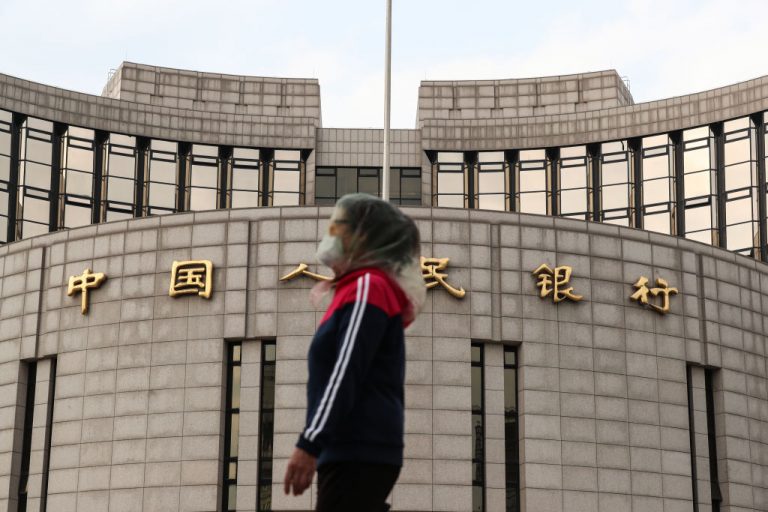Data released by the People’s Bank of China (PBOC) on Jan. 10 showed that China’s new yuan loan lending hit a record 19.95 trillion yuan ($3.14 trillion) in 2021, 1.6 percent more than the 19.63 trillion yuan ($3.09 trillion) disbursed in 2020. The value of new yuan loans lent out last year is more than the GDP of the United Kingdom.
However, the last month of the year saw a dip in new loan disbursements. December’s lending of 1.13 trillion yuan ($180 billion) is lower than November’s 1.27 trillion yuan ($200 billion) loans.
Broad M2 money supply grew nine percent in Dec. 2021 compared to the same period a year earlier; M2 money supply rose by 8.5 percent during the same period. Outstanding yuan loans only grew by 11.6 percent for the month compared to 11.7 percent in November. This was the slowest such expansion since May 2002.
Outstanding Total Social Financing (TSF) rose by 10.3 percent in December compared to a year ago. TSF is a broader measurement of the economy’s liquidity and credit situation. It takes into account things like off-balance sheet forms that are not included in the conventional bank lending systems. On a monthly basis, TSF fell to 2.37 trillion yuan in December compared to 2.61 trillion yuan in November.
Capital Economics stated that lending activity might continue to rebound over the coming months. However, CCP officials will likely prevent any sharp rise in lending.
Success
You are now signed up for our newsletter
Success
Check your email to complete sign up
“Credit growth will probably continue to edge up in the coming months given intensifying efforts to push down borrowing costs and boost lending. That said, policymakers still appear keen to balance their desire to soften the economic downturn with their concerns over high debt levels,” the note said.
Despite overall growth in new yuan loans last year, the December decline presents a clearer picture of the sector. In the past few months, concerns regarding potential large-scale defaults among property sector firms and their subsequent impact on the economy have worried investors. Banks will not be safe from any such fallout as many of them have given out loans to real estate developers.
According to a December report by S&P Global, “defaults are rising” among China’s property companies. “Using a sample of 99 domestic A-share listed property developers, we infer that about one-third of property developers could be in financial trouble… The bulk of this stress will likely show up as special-mention loans (SML) or other problem loans that don’t require high levels of provision,” the report says. As a result, “property-related pain” could keep Chinese banks’ nonperforming assets (NPA) levels elevated.
S&P estimates the ratio of nonperforming loans (NPLs) to total property loans will more than double to 5.5% by the end of this year. This will be up from around 2.5% in mid-2021 and 2% at the end of 2020. Though the overall banking sector can deal with such stress, “strengths are unevenly distributed” due to which smaller, weaker banks will potentially be exposed to “greater strain.”
Beijing is reportedly pushing banks to lend more money, especially to medium and small enterprises operating in sectors like new energy vehicles and agriculture. Banks are apparently reluctant to do so since the slowing economy has shrunk the pool of good borrowers who can meet their lending criteria.
To meet the lending quotas and satisfy government targets, banks are buying up “bankers’ acceptances,” which is a form of payment that is guaranteed by a bank rather than an individual account holder.
“Supporting the broader economy is a political task we can’t say ‘no’ to… Our losses from buying banker’s assurances are smaller than lending to unqualified businesses,” an executive at Zhongyuan Bank in the central city of Zhengzhou told FT.
One loan officer told FT that Beijing’s expectation that banks will support the economy while keeping bad debts under control is very difficult to achieve given the current economic environment.














